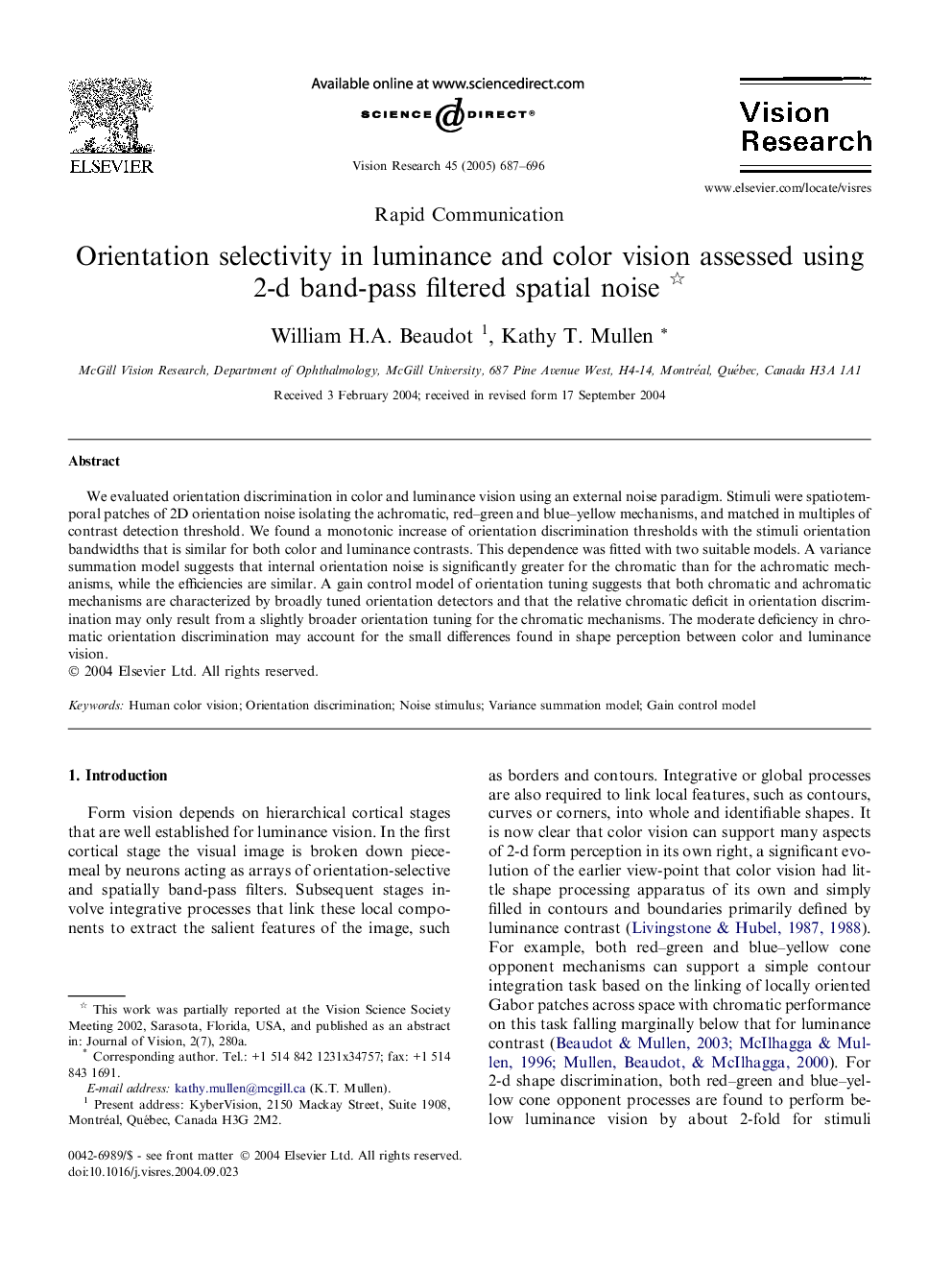| Article ID | Journal | Published Year | Pages | File Type |
|---|---|---|---|---|
| 9348571 | Vision Research | 2005 | 10 Pages |
Abstract
We evaluated orientation discrimination in color and luminance vision using an external noise paradigm. Stimuli were spatiotemporal patches of 2D orientation noise isolating the achromatic, red-green and blue-yellow mechanisms, and matched in multiples of contrast detection threshold. We found a monotonic increase of orientation discrimination thresholds with the stimuli orientation bandwidths that is similar for both color and luminance contrasts. This dependence was fitted with two suitable models. A variance summation model suggests that internal orientation noise is significantly greater for the chromatic than for the achromatic mechanisms, while the efficiencies are similar. A gain control model of orientation tuning suggests that both chromatic and achromatic mechanisms are characterized by broadly tuned orientation detectors and that the relative chromatic deficit in orientation discrimination may only result from a slightly broader orientation tuning for the chromatic mechanisms. The moderate deficiency in chromatic orientation discrimination may account for the small differences found in shape perception between color and luminance vision.
Related Topics
Life Sciences
Neuroscience
Sensory Systems
Authors
William H.A. Beaudot, Kathy T. Mullen,
